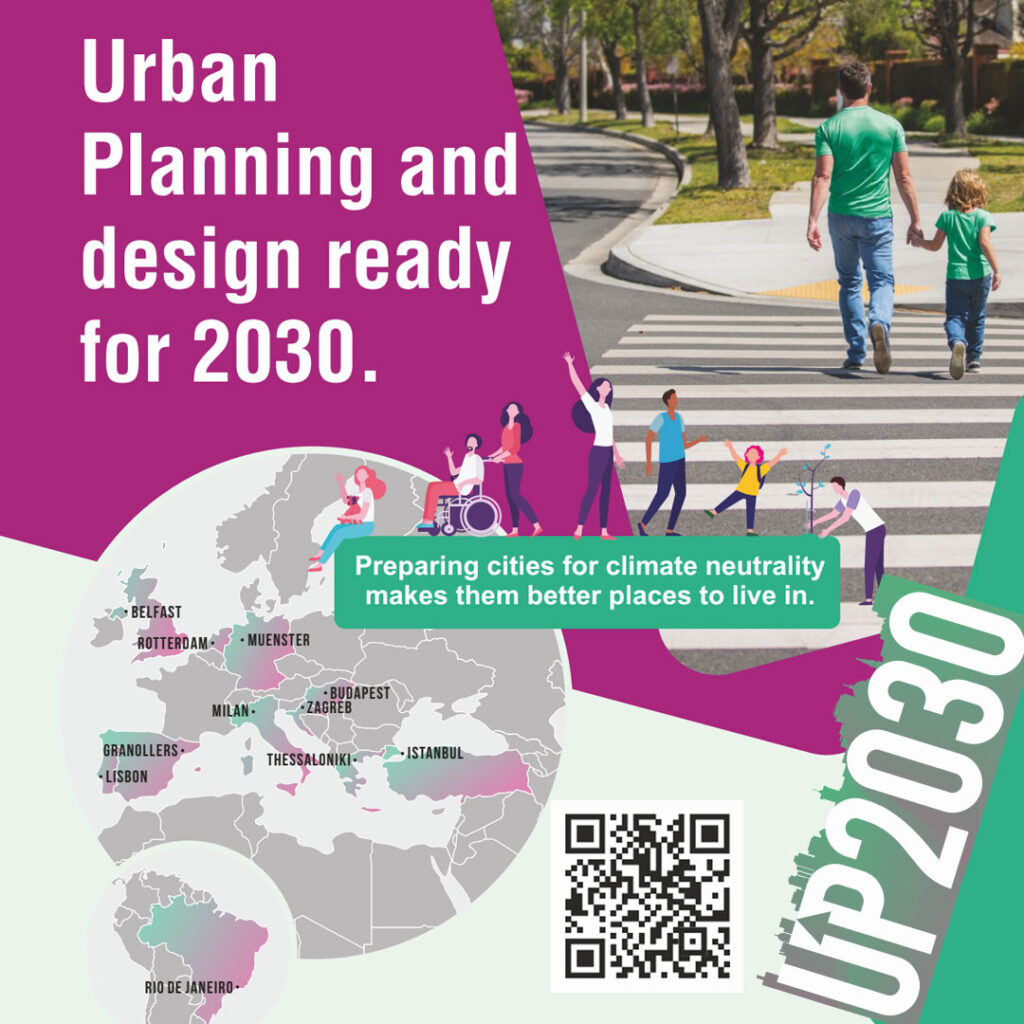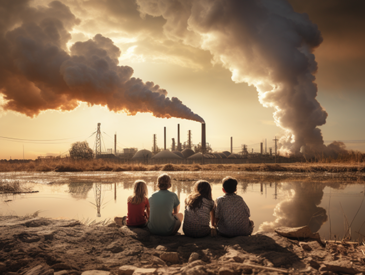Key Points
- What is climate change adaptation? Climate change adaptation refers to the process of adjusting and preparing for the impacts of climate change to reduce vulnerability and increase resilience.
- UCCRN goals: fostering multidisciplinary knowledge-based cross-sectoral action on climate change mitigation and climate change adaptation from an urban perspective.
- You may also be interested in difference between adaptation and mitigation
Climate change refers to the long-term alteration in Earth’s climate patterns, primarily driven by human activities such as the burning of fossil fuels, deforestation, and industrial processes. The emission of greenhouse gases has led to a substantial increase in global temperatures, causing widespread environmental repercussions. Extreme weather events have become more frequent and intense, disrupting ecosystems and endangering both human and animal populations. Urgent collective action is required to reduce greenhouse gas emissions, transition to renewable energy sources, and implement climate-resilient practices to mitigate the impacts of climate change and safeguard the future of our planet.
Definition of climate change adaptation
What is climate change adaptation in practice
Adaptation, from an urban perspective, relates to the process of adjusting and responding to the challenges and changes in the urban environment. The key point to understand the concept of adaptation is post-strategy. Something people and communities and local stakeholders put in place to respond to an existent disease: the current situation. People inside cities and territories are exposed to climate change issues and adaptation is the capacity to respond to this situation with strategies and behaviours.
This involves developing strategies and policies that enable cities to become more resilient and sustainable. Urban adaptation recognizes the fact that cities are complex systems, vulnerable to a range of pressures, including climate change, population growth, resource constraints, socioeconomic disparities and technological advances. To ensure successful adaptation implementation, it’s important to conduct a thorough assessment of the risks and vulnerabilities that the system faces. This should be done using robust data, models, and scenario analysis to develop adaptation measures that are flexible and adaptive over time. To support successful adaptation, implementation should be inclusive and participatory, involving all relevant stakeholders in the decision-making process. Adequate resources, including financial and technical support, must also be made available to support effective adaptation planning and implementation.
Adaptive capacity and vulnerability
So what about adaptive capacity? How do we build this capacity to be effective and participatory?
Vulnerability, in the context of urban climate challenges, refers to a list of potential disruptions such as:
- adverse effects on urban systems
- adverse effects on urban infrastructure
- adverse effects on ecosystems
- adverse effects on the well-being of urban residents
Adaptive capacity is the ability of cities and their residents to adjust, cope with, and respond to these kinds of vulnerabilities. On the other side factors that contribute to increase adaptive capacity include:
- access to resources,
- implementation of technological capabilities,
- empowerment of governance effectiveness,
- community engagement,
- access to institutional frameworks.
City adaptation policies and strategies
Adopting an integrated approach through public policies and management is essential for creating a resilient city able to live alongside the challenges posed by climate change. These policies provide a framework for action, establish goals and targets, allocate resources, and create the necessary legal and regulatory mechanisms.
What are the strategies to enhance the resilience, sustainability and livability of the cities?
Climate resilience infrastructure
Cities can invest in infrastructure that is designed to withstand the impacts of climate change.
Urban planning and design
Cities can integrate adaptation into their urban planning processes by considering climate risks and vulnerabilities. How? Incorporating green spaces and urban parks to manage heat, improve air quality and encourage walkability.
Community engagement and capacity building
Cities can engage with local communities, stakeholders, and residents to raise awareness about climate change adaptation measures. For example, in the UCCRN workshop based in Durban (January 2023), in collaboration with partners and institutions like EThekwini Municipality, UCCRN African Hub and GroundTruth, was shown what can and should be done to address climate change challenges experienced within eThekwini:
Water management
Cities can adopt strategies to manage water resources effectively. This includes implementing rainwater harvesting systems, constructing water storage facilities, improving water distribution systems, and enact measures to adapt to water shortage or flooding.
Coastal protection and sea-level rise adaptation
Coastal cities facing sea-level rise can implement adaptation measures such as constructing sea walls, flood barriers and restoring coastal wetlands as natural buffers.
One our partner, IHE Delft, is committed daily to creating awareness for water management, providing predictions and solutions for building resilient cities.
Data collection and analysis
Cities can invest in data collection systems and analytical tools to assess vulnerabilities, monitor climate-related risks and inform decision-making. This enables evidence-based planning and adaptation strategies that are responsive to changing urban conditions.
Examples of resilient city
Regeneration and technological retrofit actions are able to affect the reduction of
greenhouse gas emissions while producing adaptive benefits. Climate-resilient
design principles allow to develop strategies that can link climate risks, conditions
and priorities of interventions (Raven, 2014, p.454) Heat shelters, which are
designated cooled public buildings and/or spaces, are a common temporary emergency measure to deal with such heat wave events, as they are a relatively low-cost and easy to implement strategy that can utilize existing infrastructure and personnel (U.S. CDC, 2017). Here is a list:
Badguin tower in Yazd
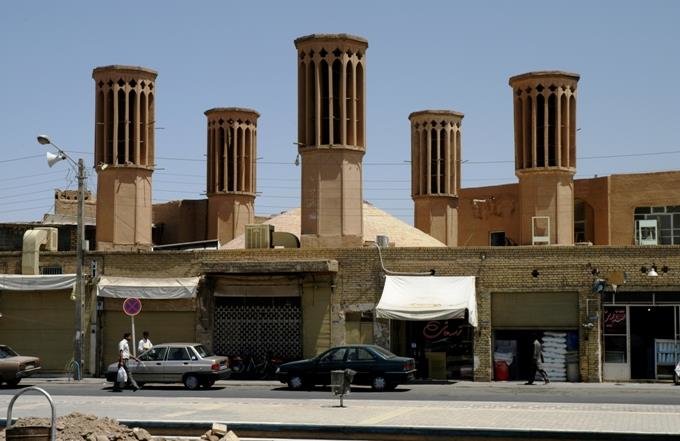
Wind tower built in the city of Yazd, Iran, which consists of wind catchers. These wind catchers work thanks to the small pressure difference between the base and the top inside the column. When a wind passes over the tower, the warm air will rise and leave the tower while the cold air will descend directly into the city. The Bagduir originally caught the hot winds that passed over the city and then cooled it with water to send fresh air into the city. Following the example of Yazd, one can imagine taking an old or abandoned industrial warehouse and using it as a heat shelter, using the same technology that the Iraqis use with their wind towers.
Cool Roofs in Indian cities like Jodhpur, Bhopal, Surat, Ahmedabad
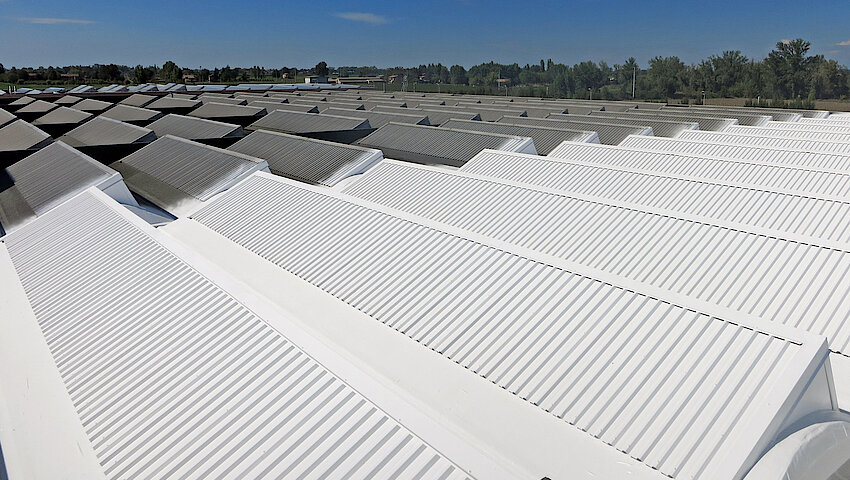
Cool roofs are one of the simplest and most cost-effective ways to fight the heat. Cool roofs keep indoor temperatures lower and can help decrease the dependence on air conditioners. They reflect sunlight and absorb less heat. Depending on the setting, cool roofs can help keep indoor temperatures lower by 2 to 5°C as compared to traditional roofs.
Urban Canopy in Toulouse, France
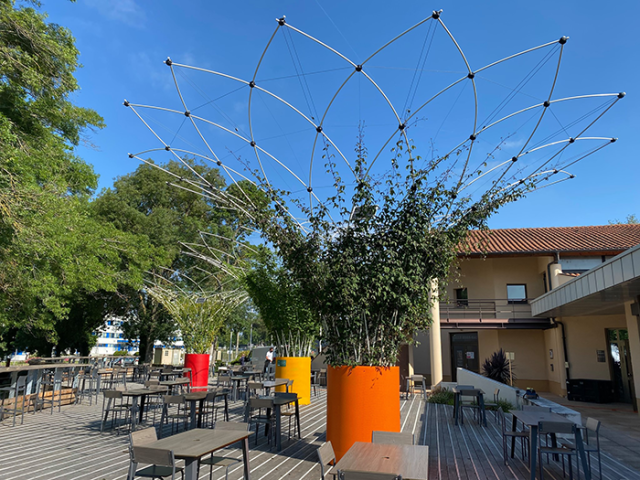
The Urban Canopy project in Toulouse, France, was initiated by start-up Urban Canopy, in collaboration with the city council of Toulouse and the Pont Paris Tech school. The canopies are designed to address the urban heat island effect in the area, as well as to increase biodiversity and reduce air pollution. The installation process is selfsufficient, with a reserve supplied by rainwater and an electronic box ensuring autonomy. A drip irrigation system is installed using sensors linked to the control box, which activates automatically when the plant is fully grown after three years. The canopies create shaded areas, which help to reduce the temperature below them by avoiding the absorption of heat by the ground. This project is a cost-effective way of improving the outside temperature and reducing air pollution while increasing biodiversity.
Cool Pavements in Los Angeles, USA
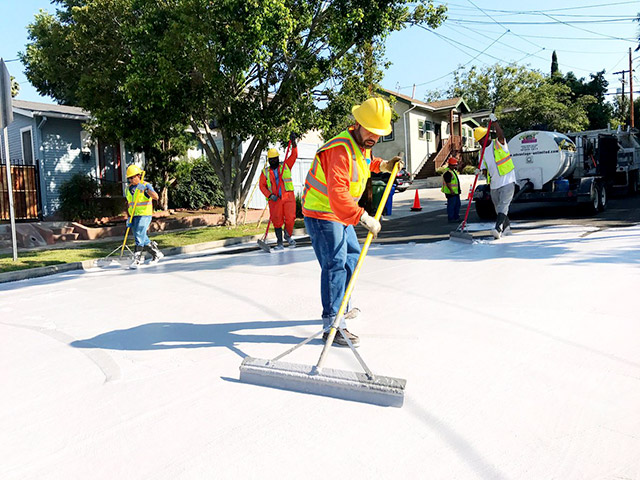
Los Angeles has been experimenting with high albedo pavements as a solution to the urban heat island effect during heat waves. These pavements reflect solar energy, preventing the surrounding air from heating up and reducing ambient temperatures. However, maintenance is crucial since pollutants and use can darken the pavement, reducing its cooling effect. Nevertheless, cool pavements have the potential to create high-quality public spaces, improve air and water quality, reduce energy consumption, and extend the life of equipment, making them a valuable addition to urban design implementations for extreme heat and coastal floods.

